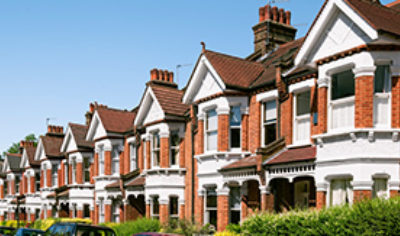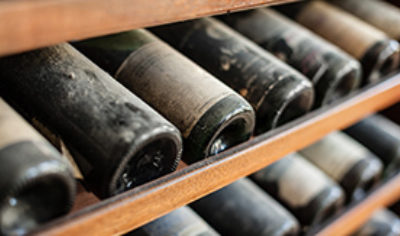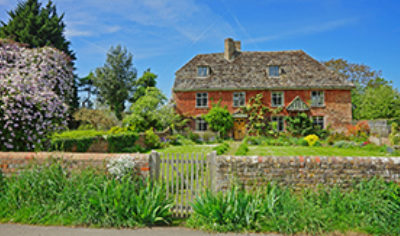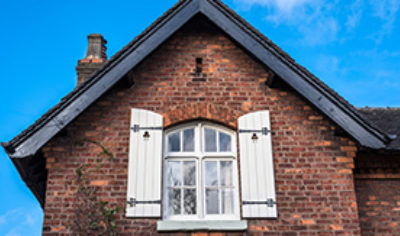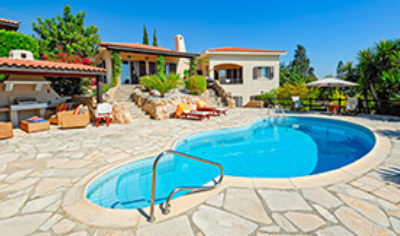Spain Guide Andalusia- The regions of Andalusia
Districts of Andalusia:
- Costa Almeria
- Cadiz
- Cordoba
- Granada
- Huelava
- Jaen
- Malaga
- Sevilla
Overview of Andalusia – Andalusia is located in the South of Spain, a wonderfully diverse and beautiful area, it slopes down to the shores of the Mediterranean and looks out over the sea to Africa. This is a land of great contrast, here you will find gorgeous green countryside,warm valleys, shady olive groves, spectacular snow capped mountain ranges, desert like landscapes and endless sun drenched beaches. The air is clean and the light is crystal clear, where else can you sun your self on the beach in the morning then after lunch take a short trip up to the mountains to go skiing.
If you travel around Andalusia in search of your Holiday Home, you will find the Andalusians to be warm and inviting, they have their own dialect and their sense of relaxed fun seems to rub off on the countless number of people that have chosen to make this area their home. Away from the throb of the coastal areas, you will find many enchanting remote white villages, often perched in the most precarious of locations, here amongst the locals you can sample the real Spain, the bull fighting, the flamenco dancing, wander through the narrow streets soaking up the atmosphere, the scent of the orange blossom and the myriad of terracotta pots all with flowers in bloom.
Andalusia covers approximately 17 % of the total area of Spain making it the largest single region, some 87268 sq km. It is larger than the European countries, Denmark, Holland & Switzerland. It is bordered in the North by Extramadura and Castilla La Mancha. On the eastern edge, it meets Murcia and the Mediterranean Sea and on the West it meets Portugal. There is a three quarter mile border in the west with the British Colony Gibraltar. The area is steeped in history dating back to the 8th Century. And although it is the glorious 900 km coastline that receives most of the attention, there are some many historic towns & cities that warrant attention.
At the present moment Andalusia is home to some 7 million people. Although the local indigenousness population has been declining since the 1950s, they are quickly being replaced by Northern Europeans being attracted by the wonderful facilities that the area has to offer. Since tourism started to take off some 30 years ago, some of the area, particularly the Costa del Sol have seen some very rapid ( and sometimes unsightly growth),the Spanish Authorities are now acting to preserve this wonderful area for future generations. The are currently 22 national parks in the area and over 18% of the total land is protected.
Andalusia enjoys one of the warmest climates in Europe, the summers are hot and the winters are mild, it makes an ideal place to have a Holiday Home. It has a modern Infrastructure, over 24000 kms of roads and Airports that can compete with the best in Europe.
Costa Almeria – the name’Almería” stems from Al-Mariyat, The Mirror of the Sea. It can lay claim to being the driest region in Europe as well as one of the warmest, the average temperature is 19 degrees, it is situated in eastern Andalusia, where the Mediterranean coastline changes from the south to the east. There is a pure intense light in this area which gives it the honor of having the highest number of daylight hours in the world. This light and the desert like landscapes have captivated the film industry over the years and many famous movies including the Spaghetti Westerns have been made here. In honor of Almeria’s relationship with the Film Industry (and to boost tourism) you will find theme parks such as Mini Hollywood, Texas Hollywood And Western Leone. The Almeria Coastline is largely unspoilt and rugged. There is a vast array of water sports available, scuba diving and sailing are popular. There is a good choice of housing although the population has increased quite significantly in recent year mainly drawn by the availability of work within the growing industry. Large parts of Almeria’s desert like landscape have proved to be very fertile when watered, large parts of the region are now covered wih green plastic sheets and much of north Europe’s winter vegetables are grown here.
Cadiz – Situated on the southern most corner of Andalusia,the province of Cádiz is a little known area of contrasting delights. Cadiz itself is the oldest city in Western Europe and it still retails an aura of old world mystery, records suggest that it was occupied as long ago as 3000BC. The original Iberian settlers lived here as well as an future civilizations of Greeks and Phoenicians It is located on a peninsula, surrounded on three sides by the Atlantic and that gives it an island feel with the bulk of the weather beaten houses unchanged since the 18 century Cadiz city has always been important as a seafaring town it was strongly tied with the African continent from where captains and merchants came and opened up the New World of the Americas. The province of Cadiz has some of Andalusia’s most wind swept beaches and prettiest villages. The Costa de la Luz or the Coast of Light is very attractive and almost completely un-spoilt, if you travel along it you will discover tiny fishing villages and beaches that look almost untouched, it has been this way for thousands of years and if you like windsurfing and peace and quiet then this is the place for you. The province boasts one of the regions most visited protected places and the rainiest place in Spain the Sierra de Grazalema Natural Park.
Cordoba -Cordoba is situated in the northern central part of Andalusia and is bordered by Malaga, Sevilla, Badajoz, Ciudad Real, Jaen and Granada. It consists of an area of 13780 sq km and currently has a population of 772000. Of these 40% live in the capital city.
The countryside of Cordoba is very varied, you will encounter rolling plains around Cordoba city, the Guadalquivir basis and South to Seville province. Along the North & West of the Province are mountain ranges with many jagged peaks. This an area where you will find remote white villages full of Spanish charm proudly displaying a never ending cascade of flowers. It is also an area of beautiful churches and Moorish castles.
Cordoba is a region that is famed for it’s olive oil and south of Cordoba the land is characterized by row upon row of olive groves and vine yards.. Here the famous Pedro Ximenez grape is used to make a white wine that is similar to sherry but much fruitier.
Cordoba is a jewel in the crown of Andalusia and until the 11th Century. was considered to be the capital of the western world, today it provides the essence of Andalusia, here you find influences of Spanish, Iberian, Roman. Islamic,Christian And Jewish Civilization Cordoba city is the home to the famous Mezquita, the Mosque of Cordoba. The mosque dates back to 785 and was the biggest and most beautiful mosque created by the Moors. It is steeped in history and was the place that Columbus first sought finance for his voyage of discovery.
Granada – the province of Granada is situated in Eastern Andalusia and is an area of great contrasts It covers some 12,500 sq Km and reaches some spectacular heights in the Sierra Nevada which is Spain’s Highest mountain Massif with the highest peak Mulhacen reaching some 3475 meters. These snow capped mountains are absolutely stunning to look yet the capital Granada is only 70kms from the coast where you can sit upon the sun drenched beach, it is possible to ski and swim in the same day. However these features do lead to the province of Granada having to endure some very extreme weather conditions. During the summer months temperatures can reach an almost unbearable 40 degrees, whilst in winter, thermometer is often below freezing.
At the foot of the Siierra Nevada and located between two rivers, the Darro and Genil, lies the capital and perhaps one of the most interesting cities in Andalusia, people from all over the world come to visit. Granada, the capital was founded in the eight century by the Moors and in 1238 was the cent re of an independent Kingdom. If you are a fan of architecture, Granada is blended between 5 different cultures, Moorish, Christian, Jewish, Romani and Modern. It has the usual number of interesting churches and museums to admire and it also boasts the Alhambra still today considered by many to be one of the wonders of the world. The Alhambra is a castle or fortress constructed over a period of many centuries. It contains gardens, palaces, fortifications and once was the home of the Arabic Sultans that rules the area. It is very popular and receives in excess of 7500 visitors a day.
Huelva – the province of Huelva is situated on the extreme right hand side of Andalusia. and is bordered by Portugal to the west, Seville province to the east and Extremadura to the north. Huelva is Andalusia’s undiscovered province, here you will find beautiful undulating countryside with rolling hills surrounding sparsely populated villages plus the occasional busy market town thrown in for good measure. Despite this, it is probably the least visited of the Andalusian provinces and many people only travel through it if they are on their way to Portugal.
The North of the area is cooler that the rest of the province on a account of it’s elevation and can be a little rainy at times. Huelva has a magnificent coastline, it is situated at the western end of the Costa de la Luz and is practically unbroken for over 100Km. The beaches here can be a little windswept but they are mainly unspoilt with fine white sand. This coastline is rich in maritime history; most famously, it is where Christopher Columbus found his crew and ships and set sail for the New World.
Huelva contains the Donna National Park which is a vast area of wetland and is teaming with wildlife, it is probably Spain’s most important national park and is Europe’s last remaining wetland space. This area is stunningly beautiful and is 550sqkm in size, there is also a 32lkm coastline that forms part of the park. The capital Of Huelva is a modern and Industrial in appearance. The population is 140000. It is a port city located between the Odiel and Tinto estuaries.
Jaen – Jaen is a province located in the eastern part of Andalusia. It is bordered by Cordoba, Ciudad Real, Albaceter and Granada. It is arguably the most beautiful of Andalusia’s mountainous regions yet it attracts few visitors, it has thus remained almost completely unspoilt with a strong Andalusian flavor. Historically Jaen has relied on Agriculture, the bulk of the land has been owned by very wealthy families and the countryside is dotted with many impressive mansions.
The hills of this region are covered with Olive Trees bearing witness to the fact that Jaen is the Worlds largest producer of Olive Oil or Liquid Gold as it is affectionately known by the locals. Everywhere you travel in this area, you cant escape the pungent smell of the oil. The are apparently over 41,000,000 million olive trees in this area and over a third of the total land area is given up to the growing of Olives. Jaen produces 200,0000 tons of Olive Oil each year, which adds up to 10% of the total amount of Olive Oil used in the world.
The capital Jaen has a population of some 116000 and is a very quiet city but it does have a magnificent cathedral and Castle however it is somewhat overshadowed by it’s impressive neighbors Baeza & Ubeda whose architecture is far superior.
Jean contains the Sierras de cazorla which is the largest national park in Spain and one of the best wilderness areas in Western Europe. The mountains in this area can reach over 7000 feet and contain pine trees and many valleys, although the summers are quite warm, the winter months can bring snow on these peaks. There are many beautiful mountain villages in this area, including Cazorla itself which serves as a gateway to the mountains and the area around the park.
Malaga – Malaga is perhaps the most familiar of the Andalusian provinces. It is located on the coast of the mediteranean and bordered by the Provinces of Cadiz, Sevilla,Cordoba and Granada. The whole area has a population of approximately 1,300,000. It contains the pulsating resorts of the Costa Del Sol and the areas of Torremolinos, Benalmadena, Fuengirola and Marbella are well known to countless holiday makers that flood this area every year. Away from these concrete resorts, Malaga also contains areas of outstanding natural beauty where rugged mountains and cliffs give way to pretty beaches and bays.
It is the smallest of the Andalusian provinces and it’s coastal areas areas enjoy a very favorable geographical position, they are protected from the prevailing winds by the mountains and enjoy the highest average temperatures in the whole of Spain. The Costa del Sol has over 300 days of sunshine each year. No wonder this is the favorite area to buy a Holiday Home in Spain.
Malaga City with a population of 550,000 is known as the gateway to the Costas as it contains the regions airport. is the second biggest city in Andalusia and has many modern attractions to tempt you from the never ending beach resorts located further along the coast.. It is a port and a centre of cultural activity, it has a vibrant lifestyle has a beautiful setting against the backdrop of the Mediterranean sea. In 2003 a museum to commemorate it’s famous son, Picasso was opened.
If you travel inland a little way from the coast, you will encounter some beautiful and rugged scenery. There are two natural parks that the local authority has given protection status to, The Sierra de las Nieves and Los Montos. Apart from Tourism, Malaga has a healthy agricultural industry and the almost perfect climate is ideal for growing Olives, Oranges & Lemons
Sevilla (Seville) – the province of Sevilla is situated in a fertile valley that is nourished by the Rio Guadalquivir. This important area of Spain has provided its countrymen with culture and a stable economy for in excess of 2000 years. It has an abundance of quality agricultural land enjoys mild winters and has an average of 3000 hours of sun per annum. There are many outstanding towns & villages within the province and it is a very popular destination for travelers (particularly those that want to get away from the coastal areas). The climate of Sevilla is Mediterranean but it does experience some Oceanic influences, the annual average temperature is 18.5 degrees and it’s capital city (and the capital of Andalusia) is one of the jewels of all of Spain)
Sevilla is Spains fourth largest city with a population of around 700,000, it’s history dates back to the Tartessian civilization from the 9th century and after this date it was for periods occupied by both the Romans and the Moors. Many monuments from the different periods are still to be found all over Sevilla and are well worth a visit. There are many beautiful palaces and large noble houses in Seville, many of them strongly influenced in their architecture by the Moorish past of the city.
Today Sevilla is a modern and dynamic city with much to tempt the visitor. It is a beautiful sun drenched place, filled with the scent of Orange blossom. It feels vibrant and alive and can honestly claim to be at the very heart of Andalusian culture. It is a centre for bull fighting and flamenco and there are always plenty of things to see and do.
Although it is located some 80km from the coast, it does have a port history. It is located on the banks of the Guadalquivil and it was from here that Magellan obtained his ships to circumnavigate the globe. Although now much silted up, Sevilla has a strong maritime feel, the history books are full of stories of sea captains returning from the new territories laden down with treasure.
On the right bank of the river is located the Cartusian monastery of Santa Maria de las Cuevas, this is the final resting place of Christopher Columbus The magnificent building claims to be the largest gothic building in the world with a beautiful 12th century bell tower, it is the third largest in Christendom.
Sevilla has played host to two world exhibitions, in 1929 and 1992. The 1929 exhibition ( Ibero American which took place in the park Maria Luisa and The World Exhibition EXPO 92
The later brought many changes, and at least 70 kilometers of new streets were constructed the infrastructure was improved and now the city is served by many quality roads and high speed rail links. Much remains of the exhibition and if you visit Isla de la Cartuja – The’Cartuja Island” you will be able to view the exhibition ground of the EXPO, today you will still find large gardens and a pretty artificial lake. Many of the pavilions constructed for the event are still in use, and there are numerous performances here, such as concerts, theaters, etc.
Spanish Holiday Home Insurance from Assetsure




